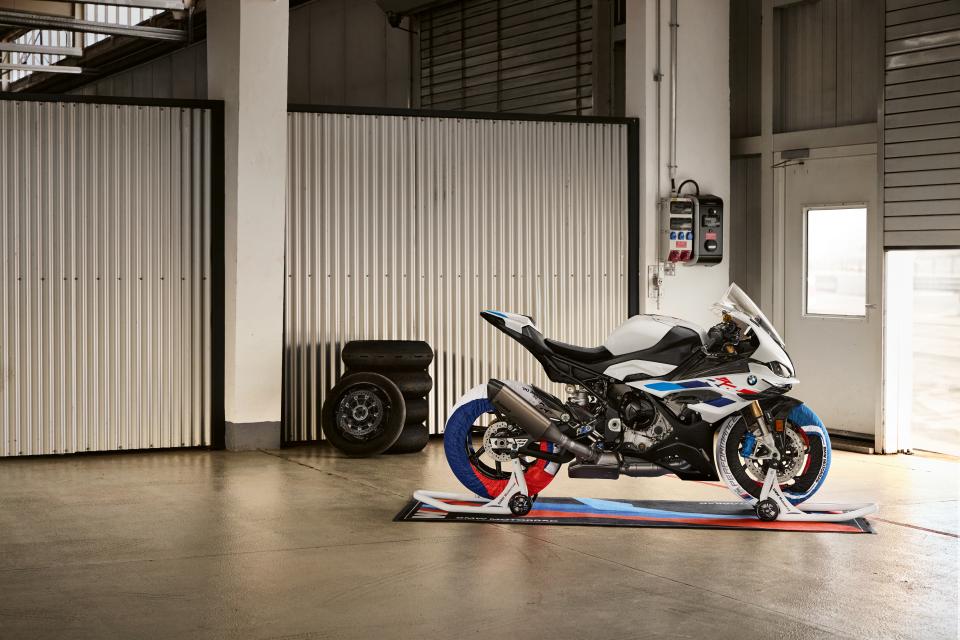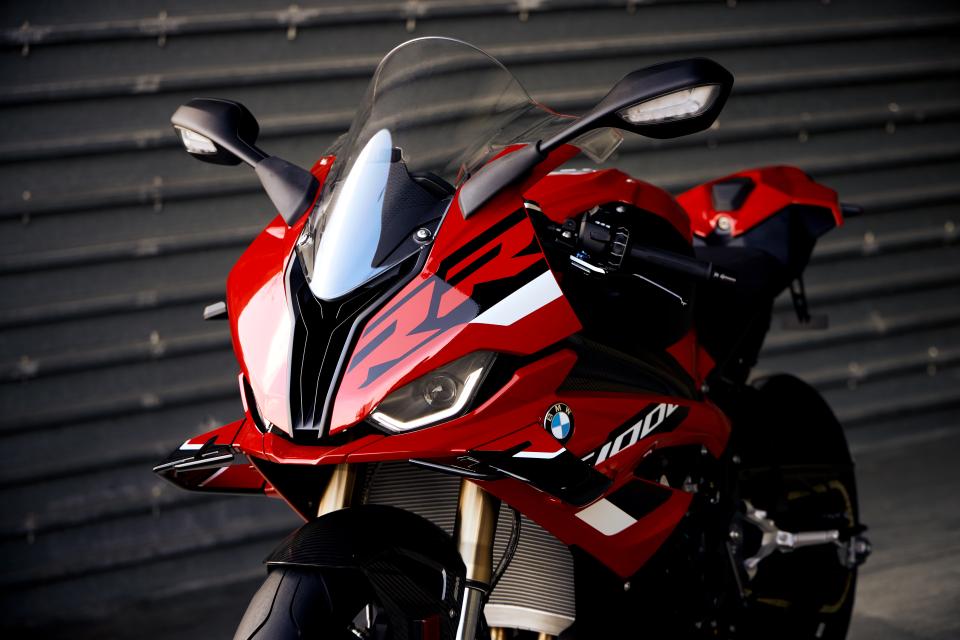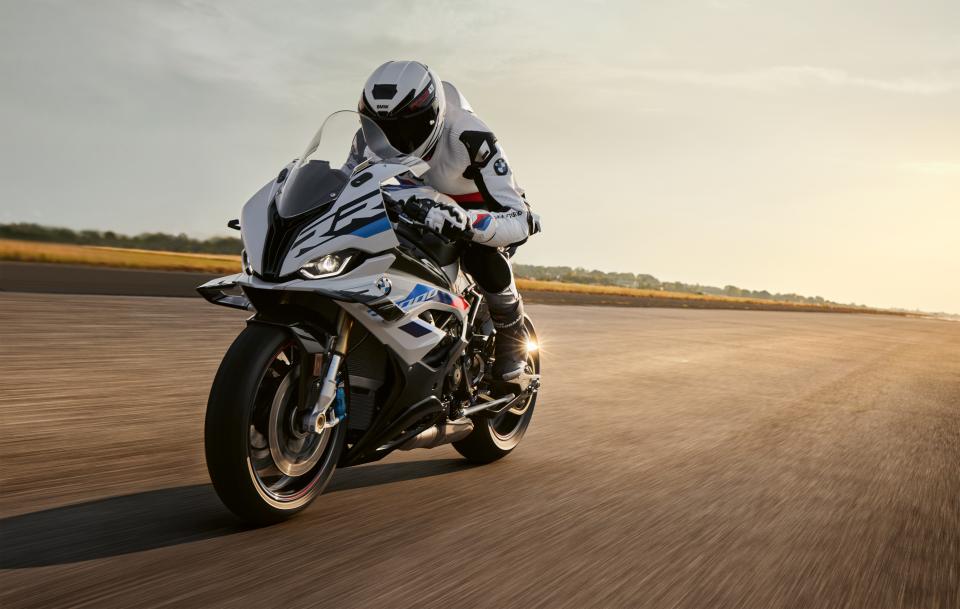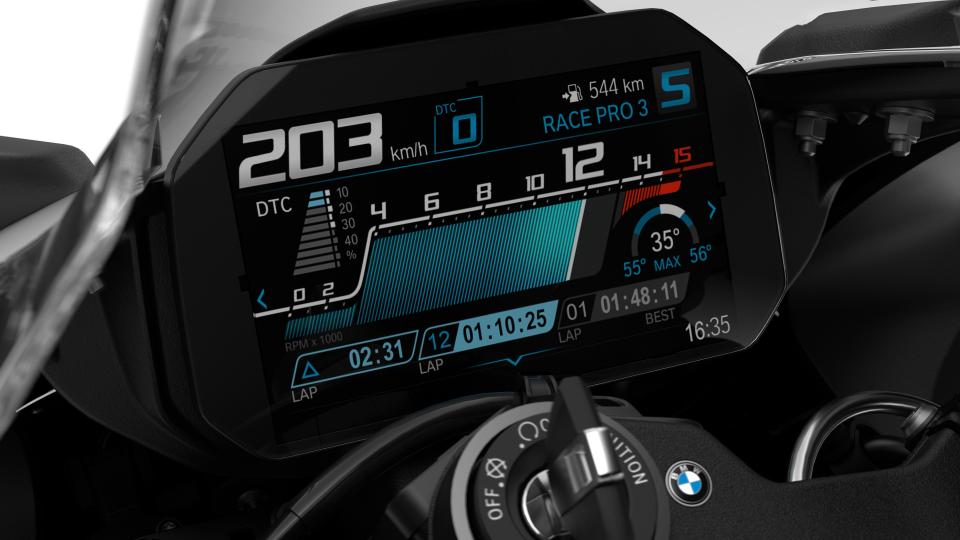BMW is renewing the S 1000 RR for MY 2023, not only with graphical changes, but also in all areas, from the engine to the chassis, not to mention the electronics.
Let's start with what we can see. First of all, the shapes get straighter lines, both at the front and the tail, where the plastics seem to have shrunk in favor of sharper, sleeker lines.
The same goes for the 'nose', which takes a lot of inspiration from the more exclusive M 1000 RR: from it it takes the aerodynamic wings (which add 10 kg extra load at the front) and adds a kind of 'mustache' that moves from left to right. runs, just below the full LED light cluster.
As with the racing bikes, the new aerodynamic package reduces the tendency for wheelies under acceleration and enables delayed braking.
The new RR still has the familiar four-cylinder inline engine, but now delivers 210 hp at 13.750 rpm, which is 3 hp more than the previous model.
The maximum torque of 113 Nm is reached at 11.000 rpm. Despite an increase in peak power, the usable engine speed range of the new RR is now wider and more complete.
The maximum engine speed is 14.600 rpm which is very high for a thousand cc engine. The power increase was achieved through the use of the “M” airbox and a new design of the intake ducts.
And that's not all: the crown of the M 1000 RR now comes with 46 teeth, versus 45 on the 2022 version, in favor of more ready acceleration.
In addition to the engine, the electronics have also been tickled and the biggest novelty is Slide Control.
Thanks to the cornering angle sensor, the new S 1000 RR now offers better management of the motorcycle at large lean angles: the rider can choose between two inclination steps of the motorcycle, allowing the motorcycle to slide until the predetermined limit is reached, after which the electronics intervene Reduce drift thanks to traction control (DTC).
Thanks in part to the introduction of the Slide Control function, ABS Pro has been expanded with Brake Slide Assist and Slick setting.
In practice, during the most 'killer' braking, the electronics allow the rear to slide into the corner according to parameters set by the rider.
As for the slick setting, the 'brain' of the S 1000 RR is now set to optimize the use of the slick tyre.
The heart of the new RR's chassis is still the aluminum bridge frame, with the engine as the load-bearing element.
In order to optimize flexibility laterally, the main frame of the new RR has several openings in the side surfaces.
In developing the new chassis of the RR, the emphasis was also on further increasing driving precision.
The head tube angle has been flattened by 0.5° and the offset of the triple clamps has been reduced by 3 mm.
The new chassis geometry is not only associated with even better driving precision, but also with greater accuracy and clearer feedback from the front wheel.





